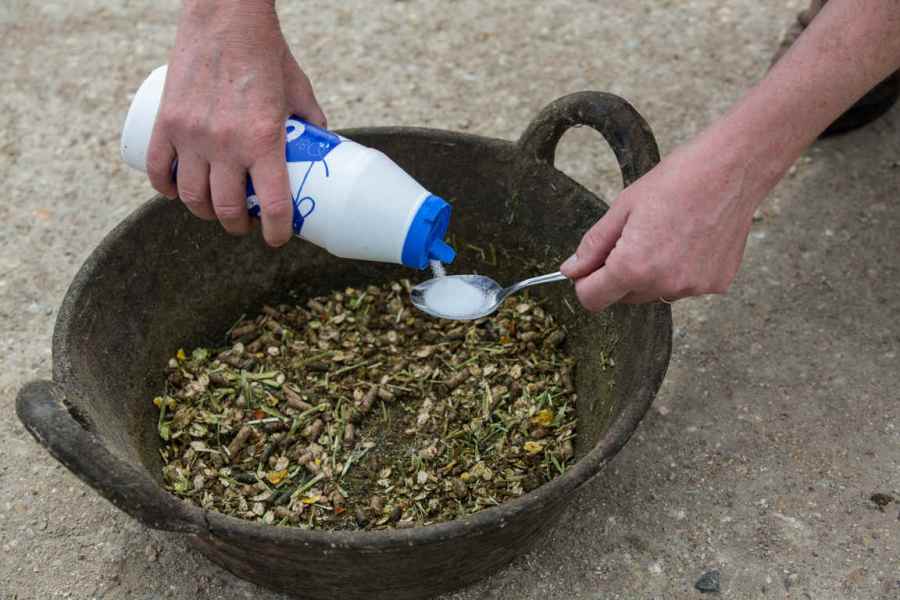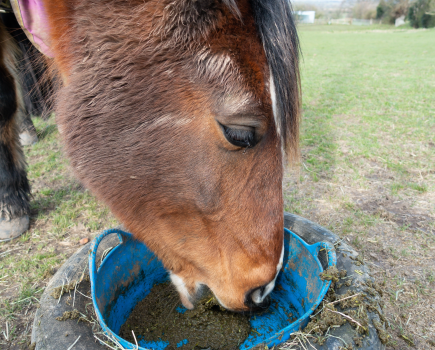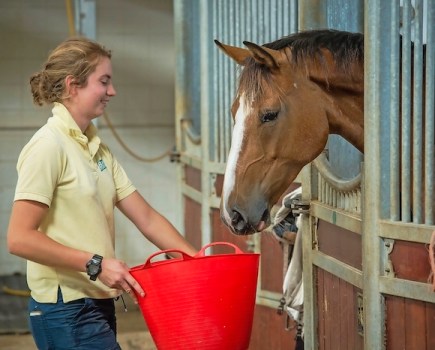We’re always hearing about how much salt is in our own diets, but how much do horses need and what’s the easiest way to provide it? We ask Tracey Hammond from Dengie Horse Feeds for her advice.
Salt (or more specifically sodium chloride) supplies two of the electrolytes that horses need. In addition to sodium and chloride, horses also require potassium, calcium and magnesium in lesser amounts.
All feeds and forages provide some electrolytes, but even for horses at rest, the amount of sodium included in these feeds is often not enough and should be supplemented. The NRC nutrient requirements for horses says that the minimum requirements for sodium are 0.02 x bodyweight, which is 10g for a 500kg horse. Electrolytes are lost in sweat and so the harder a horse works, the greater the losses and the greater his need will be.
Salt licks can give your horse free access to salt, but this doesn’t guarantee he’ll consume enough. Another method is to add salt to his daily feed. Supplying 25g of table salt (sodium chloride) will meet his requirements at maintenance; table salt is approximately 40% sodium.
Salt can affect the palatability of a feed and should be introduced gradually. Mixing this with water should also help to stop it falling to the bottom of the bucket and being rejected.
For horses that are working and competing regularly, a commercial electrolyte supplement will provide the range of electrolytes the horse needs. You should feed according to the manufacturer’s instructions to make sure he gets the right amount and always allow access to water.









